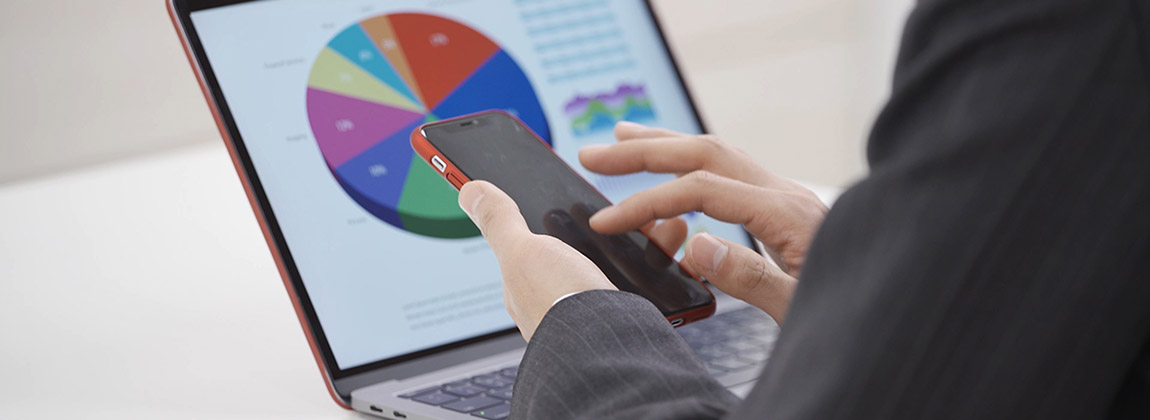Remote Selling with Andy Snook

FastPath, Inc. is a Greater Des Moines (DSM)-based company founded in 2004. Currently, they have over 1,200 customers in more than 30 countries. Their products range in cost from $10,000 to $500,000. All of these customers, save a handful, were sold remotely using video conferencing, phones and an outstanding sales process. CEO Andy Snook joined us for a virtual conference to talk through how they have accomplished this stellar success.
Virtual Selling
In general, virtual sales convert at about a 16% rate as compared to 40% with in person selling. Fastpath’s conversion rate is 52%. Andy attributes this success to understanding that 90% of all communications is non-verbal. His team focuses on two key areas: being prepared for meetings and executing against a strong sales process.
Andy started the seminar by outlining several key areas to prepare for a virtual meeting. His team uses Zoom for these meetings, but there are other comparable tools that work just as well. For any specific meeting, start by understanding what specifically you want to get out of the meeting. What are you selling at each step? Are you working to schedule a demonstration of your system with the key stakeholders? If so, your meeting should center on determining who those stakeholders are and what specific areas they want addressed by your product.
Know Your Audience
Ask yourself the following questions regarding your audience:
- What is the challenge you have to address? In other words, what do they want to hear?
- Who is the audience today? What roll do they play?
- Who are the decision makers/deal breakers for this sale?
- What is the purchasing policy? Do you know who has to sign off on the expenditure?
Prepare for Your Virtual Meeting
In getting ready for each call, Andy stresses the following:
Hire a Caddy
For the non-golfers, the caddy (along with carrying the bag) gives insightful advice and moral support, almost like a teacher. This allows the presenter to focus on the presentation and the caddy runs the technology for the call.
Don’t Be On Time
Be early!
Know Your Audience
Know who is attending and what they are expecting.
Make Introductions
Remember to do introductions on both sides. Make sure you have who you expected on the call. If you are missing key people, offer to reschedule the call. You are likely wasting your time if the key players are not in the room.
Re-Affirm the Customer Business Challenge
State what you believe the challenge(s) facing the customer. This allows you to set the perspective for the meeting and gives you a chance to make sure you are meeting the need of the customer.
Address the Business Challenge
Stay focused on the challenge for that particular customer. This is not a generic demo so do not show sections of your product that are not specific to the challenge at hand.
Stop and Ask Questions.
Frequently. You are on a remote call. You likely cannot read the room visually. Make your questions specific. “Does the feature I just reviewed solve some or all of the business challenge you face?
Leave Reasons to Follow-Up
In some cases, you may defer a complex question for follow-up simply to make sure you have the opportunity to re-engage.
Andy requires his “Identify and Engage” team to complete a demonstration prep sheet before a demo will be presented to the customer. This sheet lays out all of the details of the account and specifically what the customer is looking for in the product. If they do not prepare the sheet, they do not receive their commission.
Tips for Working with Virtual Tools/Technology
When it comes to working online with tools such as Zoom, Andy recommends the following:
- Pick a technology and master it.
- Be prepared to troubleshoot the technology. Fumbling around to find how to change a setting will diminish your credibility.
- Do not bank on freeware. While it might be tempting to save a few dollars, a professional tool will make you and your team look more professional.
- Make sure the customer allows the use of the product you are using. Many corporate IT policies strictly limit what technologies can be used within their firewall.
- Use headsets with hardware mute and talk buttons. While there are fancy wireless headsets, a simple wired headset will more than meet the need. Here are a couple recommendations:
- Headset: Microsoft LifeChat LX-3000 Headset
- Speaker phone: Jabra Speak 510 MS Wireless Bluetooth Speaker for Softphone and Mobile Phone
- Record your demos and review. Practice will improve your skills.
Andy and his team built out a comprehensive sales process. Learn more by watching the entire presentation, including the detailed step information for each of the sales stages. See a sample of this demo prep sheet within the slide deck. Even if you are one-person company, this process will improve your odds of success.
Interested in finding out more about remote selling? See info from the Remote Selling webinar below:
You can count on The Partnership to continue to share accurate and fact-based updates as well. See more on COVID-19 here.
Find these tips useful? Find more business tools and information by visiting the Business Resources page.
Mike Colwell
As executive director of entrepreneurial initiatives of the Greater Des Moines Partnership, Mike Colwell leads works with startups to build their business model, financial model, marketing strategies and capitalization plan. He is also co-manager of Plains Angels, a group of Iowa-based Midwest angel investors. Mike spends his days coaching, mentoring, consulting and asking tough questions to help entrepreneurs reach their full potential. Mike assists with business strategy, business planning, business plan execution, business model development and capital acquisition strategies.